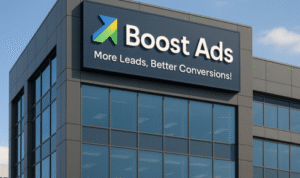
Digital Marketing Solutions
Understanding the Synergy Between SEO, PPC, and Content
In today’s fast-paced online landscape, businesses must embrace Digital Marketing Solutions that integrate multiple channels rather than rely on a single tactic. SEO (Search Engine Optimization), PPC (Pay-Per-Click advertising), and content marketing each have unique strengths—but when combined strategically, they create a holistic approach that drives visibility, engagement, and conversions.
Image source: pexels.com
Consider an e-commerce brand launching a new product. Instead of depending solely on organic SEO rankings, they might run PPC ads targeting high-intent keywords while simultaneously publishing blog posts and videos that educate potential customers. This synergy helps capture both immediate traffic through PPC and long-term authority via SEO and content.
To execute this integration, start by auditing your existing digital presence. Identify overlapping keywords across your SEO and PPC efforts, evaluate content gaps, and align your messaging across channels. Document these insights in a shared marketing plan to ensure consistency and collaboration among teams.
Crafting SEO Strategies for Sustainable Growth
SEO remains the bedrock of any digital marketing strategy. It involves optimizing your website’s technical structure, on-page elements, and acquiring quality backlinks to rank higher on search engines. However, successful SEO goes beyond keyword stuffing or chasing trends—it’s about understanding user intent and creating valuable experiences.
For example, a SaaS company offering project management tools might target keywords like “best project management software.” Rather than merely optimizing a sales page, they could publish in-depth guides, comparison articles, and video tutorials to address users’ research needs.
To implement SEO effectively:
- Keyword Research: Use tools like SEMrush or Ahrefs to identify high-volume, low-competition keywords relevant to your audience.
- On-Page Optimization: Incorporate keywords naturally into titles, headers, meta descriptions, and body content.
- Technical SEO: Ensure fast page load speeds, mobile-friendliness, and proper indexing of your site.
- Content Creation: Produce informative, engaging content tailored to each stage of the buyer’s journey.
- Link Building: Earn backlinks from reputable sites to boost domain authority.
Schedule regular performance audits to monitor rankings and adjust strategies based on analytics.
Leveraging PPC for Quick Wins and Data Insights
While SEO takes time to build traction, PPC offers instant visibility. Platforms like Google Ads and Microsoft Advertising enable businesses to bid on specific keywords and appear at the top of search results. However, successful PPC isn’t just about spending money—it’s about targeting the right audience with the right message.
Consider a local law firm launching a PPC campaign for “personal injury attorney near me.” Instead of broad targeting, they should use geo-specific keywords, ad extensions highlighting services, and compelling ad copy that resonates with potential clients.
Steps to run effective PPC campaigns:
- Define Goals: Clarify whether you’re focused on sales, leads, or brand awareness.
- Keyword Selection: Choose keywords based on user intent and cost-per-click analysis.
- Ad Copywriting: Write concise, persuasive ads that include calls to action.
- Landing Page Optimization: Direct users to relevant, high-converting pages.
- Monitoring and Refinement: Regularly analyze metrics like click-through rates (CTR) and cost-per-acquisition (CPA) to fine-tune campaigns.
PPC data can also inform SEO efforts by revealing which keywords and ad copy drive the highest engagement.
Building Content That Connects and Converts
Content marketing is the bridge connecting SEO and PPC. High-quality content attracts organic traffic, nurtures leads, and improves paid ad performance by providing resources that build trust. It’s not enough to produce generic blog posts; content must resonate with your audience’s pain points and interests.
Take, for instance, a fitness brand launching a new supplement. Rather than pushing purely promotional material, they might create workout guides, nutrition tips, and video testimonials to educate and engage users.
To create impactful content:
- Audience Research: Develop buyer personas to understand motivations and challenges.
- Topic Planning: Use tools like AnswerThePublic to identify trending questions.
- Content Formats: Diversify with blogs, infographics, podcasts, and videos.
- SEO Integration: Optimize content with keywords without sacrificing readability.
- Promotion: Share content through social media, email newsletters, and paid ads for maximum reach.
Regularly update evergreen pieces to maintain relevance and rankings.
Connecting SEO, PPC, and Content for Unified Campaigns
True success lies in weaving SEO, PPC, and content into cohesive campaigns. Rather than working in silos, these channels should feed insights into one another. For example, high-performing PPC ad copy can inspire meta descriptions for SEO pages, while top-ranking organic content can identify topics worth promoting through paid ads.
Suppose a B2B software company identifies “AI project management tools” as a high-converting PPC keyword. They can create in-depth blog posts targeting the same keyword for SEO while also repurposing that content into whitepapers promoted via PPC to generate leads.
To integrate your digital efforts:
- Centralize Data: Use analytics platforms to share insights across teams.
- Unified Messaging: Maintain consistent brand voice and messaging across all channels.
- Cross-Channel Testing: Experiment with messaging in one channel and apply learnings to others.
- Collaborative Planning: Hold regular strategy meetings to align priorities and resources.
Integration improves efficiency and maximizes marketing ROI.
Measuring and Optimizing Performance
Success in digital marketing isn’t static—it’s a process of continuous measurement and improvement. Integrated campaigns demand comprehensive reporting that examines how SEO, PPC, and content collectively contribute to results.
Consider an e-commerce retailer analyzing the path to purchase. Analytics might reveal that users often discover the brand through a blog post (SEO), click a retargeting ad (PPC), and then convert via a product page. Recognizing these touchpoints enables smarter budget allocation and strategy adjustments.
To measure and optimize:
- Define KPIs: Set clear metrics for each channel and for overall goals.
- Attribution Modeling: Understand how each touchpoint influences conversions.
- Regular Reporting: Review performance monthly to spot trends.
- Adjust Strategies: Reallocate budget and efforts based on insights.
Optimization ensures your investment in Digital Marketing Solutions continually delivers growth and competitive advantage.


